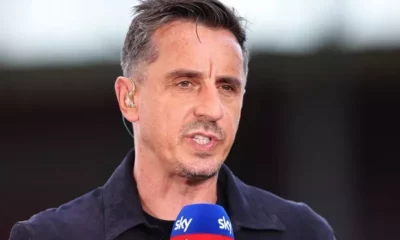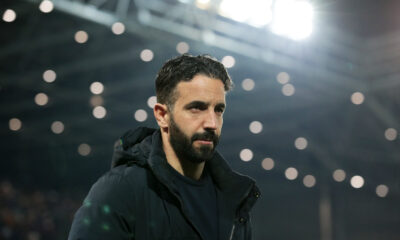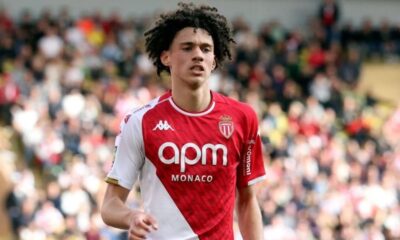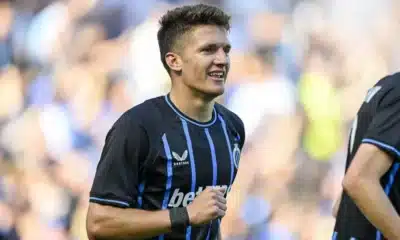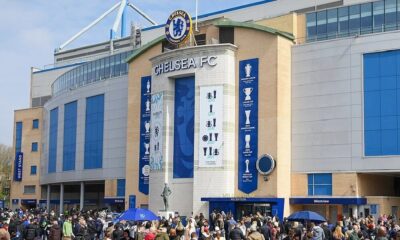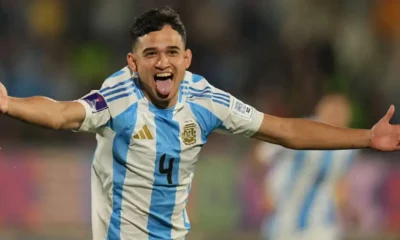Chelsea
Can Torres & Drogba Play Together?
Chelsea’s capture of Fernando Torres from Liverpool for a British record £50m stunned the Premier League and the world, and was seen by many as the necessary shot in the arm to the defending champion’s title push. The Spaniard has 26 goals for his national side, and was a key figure in their qualification for and eventual triumphs in Euro 2008 and South Africa 2010; despite a loss of form at the World Cup, he is undoubtedly one of the most talented frontmen in the world and would walk into any team.
Since coming to the Premier League from Atletico Madrid in the summer of 2007, “El Nino” has netted a stunning 65 times; but skeptics have questioned the necessity of his acquisition, and since his arrival Carlo Ancelloti has frequently had to change tactics to accommodate his new player. With Didier Drogba’s similar record and talent, along with Nicolas Anelka, who is by no means a slouch, we’ll break down how Torres and Drogba could potentially fit into the same side effectively, if that is even possible.
During their stays in the Premier League, both Torres and Drogba have thrived as the main options in the attack. Indeed, during the same period Drogba has scored 51 goals in the league, and injuries limited him to less than 20 appearances during the 07/08 and 08/09 seasons. While at Chelsea, his strike partners have at times included Andriy Schevchenko, Nicolas Anelka, Solomon Kalou, Hernan Crespo, Eidur Gudjohnsen, and Claudio Pizarro. All have varying degrees of usefulness, and it would be silly to disregard players with pedigrees like Anelka. But it is clear that Drogba has been the primary figure, and is almost always the first choice.
The same is true of Torres during his time on Merseyside. At times paired with Dirk Kuyt, Robbie Keane, and David N’Gog, Torres has benefited as the most talented striker, and received the most service. Keane’s short spell at Anfield showed that Torres has problems developing an understanding with the Irishman, preferring the 4-2-3-1 Benitez usually employed before Keane’s arrival. With Keane, a tried and tested top flight scorer, it was thought that Torres and Keane could lead the line and Liverpool could employ a 4-4-2. This period was the only time Torres was forced to play in a 4-4-2 often, but because Benitez didn’t seem to rate Keane, the current West Ham striker spent most of his time on the bench anyway, leaving Torres again in his role as lone striker.
Both have worked well with an influential midfielder who can move up into attack, in the form of Frank Lampard and Steven Gerrard, respectively. Both strikers can hold the ball up for these two with their backs turned to goal, and also make runs to receive passes from the midfielders. As we have seen with the aforementioned Keane, some strikers are simply cut out, or thrive, in certain formations; for example Keane struggles as a lone striker and plays much better in a 4-4-2.
With Roman Abramovich having invested £75m in the club in January when the spending spree seemed to have ended, the Russian owner will be eager to see his new employee in action. The pressure is on Ancellotti to successfully utilize Torres while also keeping Drogba happy and scoring goals. Making it even harder is the form of Nicolas Anelka, who has scored 16 goals for the Blues in all competitions this year, with a crucial 7 in the Champions League.
After initially dropping Drogba for Torres, and switching back and forth with both as the lone striker in the usual 4-2-3-1, Ancellotti opted for a 4-4-2 against Manchester United in the 2-1 victory at Stamford Bridge. Anelka paired up with Torres up top, with Drogba again relegated to the bench, but the Ivory Coast captain came on for Anelka after a listless hour of work for the Frenchman. Although Chelsea won the match, the 4-4-2 seemed to limit their offense and had the aura of square pegs being forced into round holes. The forwards struggled for understanding, and Frank Lampard was unable to push and attack as much without the security of two holding midfielders behind him; Lampard is usually at his best when playing, like Gerrard, almost as a second striker, and in the 4-4-2 he is a much more box-to-box player who must take care of his defensive duties to avoid the midfield being overrun on the counter. Torres and Anelka cannot really play on the wing, and Drogba has never really been a fan of being positioned there. The Ivorian and the Spaniard again struggled to find understanding in Chelsea’s 3-1 win over Blackpool, and it was John Terry and Frank Lampard who were left to provided the margin of victory.
It seems the old adage persists that the team cannot be changed for one player, but then again if Torres, Drogba and Anelka did develop and understanding, and adapted to the 4-4-2, Ancellotti would have two world class strikers to pick from every match, and one on the bench, along with the pacy and skillfull Salomon Kalou, who replaced Drogba on 55 minutes against Blackpool and put on a scintillating display, setting up Lampard’s second. This, though, could weaken the effect of Lampard, even if the diamond variation of the 4-4-2 is used, because Ramires is more of a central defensive midfielder rather than a winger, even if Essien or Mikel are capable of shielding the back four.
Rooney, Keane, Heskey, and others have not only played in a 4-4-2 for their almost all of their professional careers, but have also been nurtured with the formation and know it like the back of their hand. If Torres and Drogba can adapt their game and learn to play together remains to be seen, but a total overhaul of a squad and system that has been so effective seems shortsighted and dangerous, even for such a talented arrival like Torres, especially when it will take time to optimize their abilities with May growing closer.




